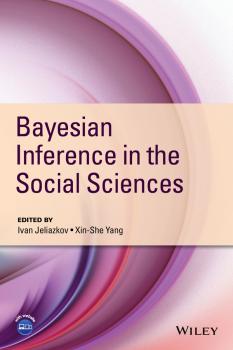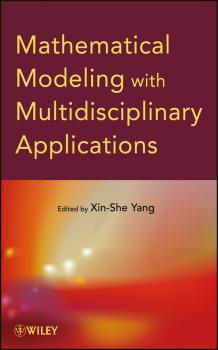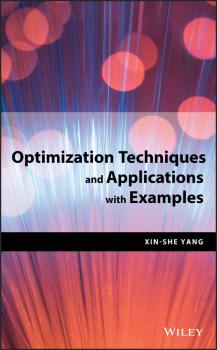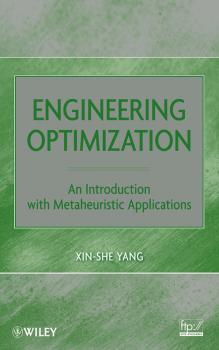ТОП просматриваемых книг сайта:















Xin-She Yang
Список книг автора Xin-She YangАннотация
Presents new models, methods, and techniques and considers important real-world applications in political science, sociology, economics, marketing, and finance Emphasizing interdisciplinary coverage, Bayesian Inference in the Social Sciences builds upon the recent growth in Bayesian methodology and examines an array of topics in model formulation, estimation, and applications. The book presents recent and trending developments in a diverse, yet closely integrated, set of research topics within the social sciences and facilitates the transmission of new ideas and methodology across disciplines while maintaining manageability, coherence, and a clear focus. Bayesian Inference in the Social Sciences features innovative methodology and novel applications in addition to new theoretical developments and modeling approaches, including the formulation and analysis of models with partial observability, sample selection, and incomplete data. Additional areas of inquiry include a Bayesian derivation of empirical likelihood and method of moment estimators, and the analysis of treatment effect models with endogeneity. The book emphasizes practical implementation, reviews and extends estimation algorithms, and examines innovative applications in a multitude of fields. Time series techniques and algorithms are discussed for stochastic volatility, dynamic factor, and time-varying parameter models. Additional features include: Real-world applications and case studies that highlight asset pricing under fat-tailed distributions, price indifference modeling and market segmentation, analysis of dynamic networks, ethnic minorities and civil war, school choice effects, and business cycles and macroeconomic performance State-of-the-art computational tools and Markov chain Monte Carlo algorithms with related materials available via the book’s supplemental website Interdisciplinary coverage from well-known international scholars and practitioners Bayesian Inference in the Social Sciences is an ideal reference for researchers in economics, political science, sociology, and business as well as an excellent resource for academic, government, and regulation agencies. The book is also useful for graduate-level courses in applied econometrics, statistics, mathematical modeling and simulation, numerical methods, computational analysis, and the social sciences.
Аннотация
Features mathematical modeling techniques and real-world processes with applications in diverse fields Mathematical Modeling with Multidisciplinary Applications details the interdisciplinary nature of mathematical modeling and numerical algorithms. The book combines a variety of applications from diverse fields to illustrate how the methods can be used to model physical processes, design new products, find solutions to challenging problems, and increase competitiveness in international markets. Written by leading scholars and international experts in the field, the book presents new and emerging topics in areas including finance and economics, theoretical and applied mathematics, engineering and machine learning, physics, chemistry, ecology, and social science. In addition, the book thoroughly summarizes widely used mathematical and numerical methods in mathematical modeling and features: Diverse topics such as partial differential equations (PDEs), fractional calculus, inverse problems by ordinary differential equations (ODEs), semigroups, decision theory, risk analysis, Bayesian estimation, nonlinear PDEs in financial engineering, perturbation analysis, and dynamic system modeling Case studies and real-world applications that are widely used for current mathematical modeling courses, such as the green house effect and Stokes flow estimation Comprehensive coverage of a wide range of contemporary topics, such as game theory, statistical models, and analytical solutions to numerical methods Examples, exercises with select solutions, and detailed references to the latest literature to solidify comprehensive learning New techniques and applications with balanced coverage of PDEs, discrete models, statistics, fractional calculus, and more Mathematical Modeling with Multidisciplinary Applications is an excellent book for courses on mathematical modeling and applied mathematics at the upper-undergraduate and graduate levels. The book also serves as a valuable reference for research scientists, mathematicians, and engineers who would like to develop further insights into essential mathematical tools.
Аннотация
A guide to modern optimization applications and techniques in newly emerging areas spanning optimization, data science, machine intelligence, engineering, and computer sciences Optimization Techniques and Applications with Examples introduces the fundamentals of all the commonly used techniques in optimization that encompass the broadness and diversity of the methods (traditional and new) and algorithms. The author—a noted expert in the field—covers a wide range of topics including mathematical foundations, optimization formulation, optimality conditions, algorithmic complexity, linear programming, convex optimization, and integer programming. In addition, the book discusses artificial neural network, clustering and classifications, constraint-handling, queueing theory, support vector machine and multi-objective optimization, evolutionary computation, nature-inspired algorithms and many other topics. Designed as a practical resource, all topics are explained in detail with step-by-step examples to show how each method works. The book’s exercises test the acquired knowledge that can be potentially applied to real problem solving. By taking an informal approach to the subject, the author helps readers to rapidly acquire the basic knowledge in optimization, operational research, and applied data mining. This important resource: Offers an accessible and state-of-the-art introduction to the main optimization techniques Contains both traditional optimization techniques and the most current algorithms and swarm intelligence-based techniques Presents a balance of theory, algorithms, and implementation Includes more than 100 worked examples with step-by-step explanations Written for upper undergraduates and graduates in a standard course on optimization, operations research and data mining, Optimization Techniques and Applications with Examples is a highly accessible guide to understanding the fundamentals of all the commonly used techniques in optimization.
Аннотация
An accessible introduction to metaheuristics and optimization, featuring powerful and modern algorithms for application across engineering and the sciences From engineering and computer science to economics and management science, optimization is a core component for problem solving. Highlighting the latest developments that have evolved in recent years, Engineering Optimization: An Introduction with Metaheuristic Applications outlines popular metaheuristic algorithms and equips readers with the skills needed to apply these techniques to their own optimization problems. With insightful examples from various fields of study, the author highlights key concepts and techniques for the successful application of commonly-used metaheuristc algorithms, including simulated annealing, particle swarm optimization, harmony search, and genetic algorithms. The author introduces all major metaheuristic algorithms and their applications in optimization through a presentation that is organized into three succinct parts: Foundations of Optimization and Algorithms provides a brief introduction to the underlying nature of optimization and the common approaches to optimization problems, random number generation, the Monte Carlo method, and the Markov chain Monte Carlo method Metaheuristic Algorithms presents common metaheuristic algorithms in detail, including genetic algorithms, simulated annealing, ant algorithms, bee algorithms, particle swarm optimization, firefly algorithms, and harmony search Applications outlines a wide range of applications that use metaheuristic algorithms to solve challenging optimization problems with detailed implementation while also introducing various modifications used for multi-objective optimization Throughout the book, the author presents worked-out examples and real-world applications that illustrate the modern relevance of the topic. A detailed appendix features important and popular algorithms using MATLAB® and Octave software packages, and a related FTP site houses MATLAB code and programs for easy implementation of the discussed techniques. In addition, references to the current literature enable readers to investigate individual algorithms and methods in greater detail. Engineering Optimization: An Introduction with Metaheuristic Applications is an excellent book for courses on optimization and computer simulation at the upper-undergraduate and graduate levels. It is also a valuable reference for researchers and practitioners working in the fields of mathematics, engineering, computer science, operations research, and management science who use metaheuristic algorithms to solve problems in their everyday work.




